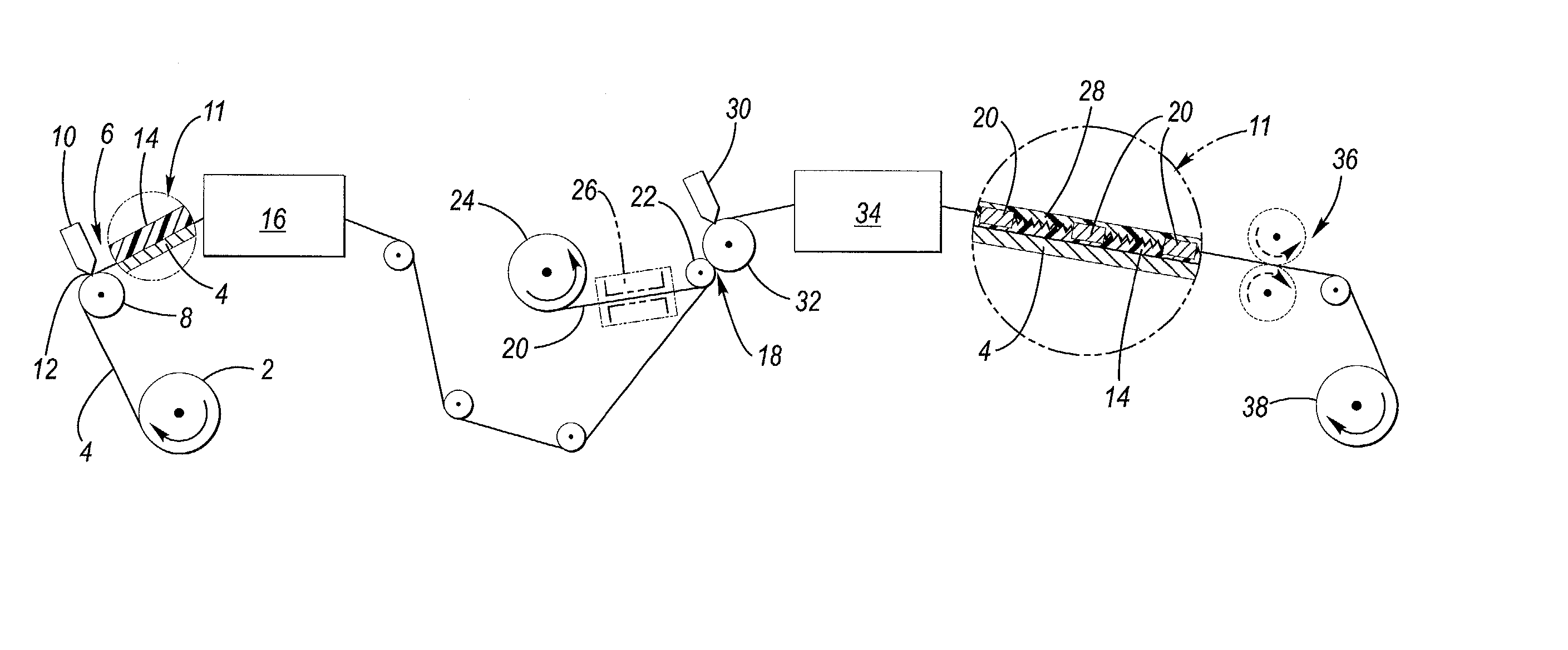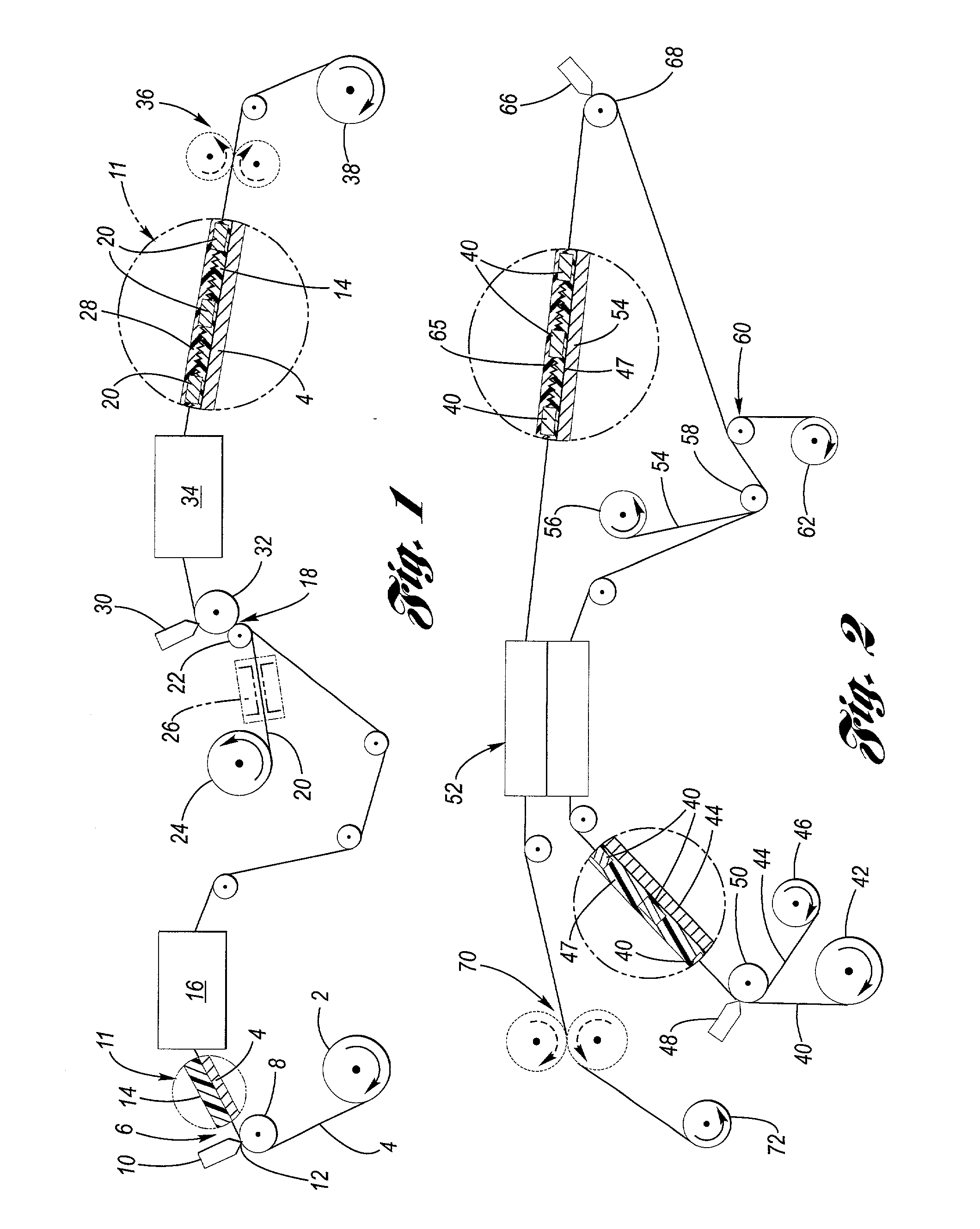System and method for multilayer fabrication of lithium polymer batteries and cells using surface treated separators
a lithium polymer battery and surface treatment technology, applied in the field of electrode making, can solve the problems of increasing fabrication cost and complexity, inoperable battery, and inability to achieve consistent and enduring lamination
- Summary
- Abstract
- Description
- Claims
- Application Information
AI Technical Summary
Problems solved by technology
Method used
Image
Examples
Embodiment Construction
[0047] FIG. 6 shows the multi-layer fabrication process for a bicell. The process shown in FIG. 4 will be used to make two counter electrodes, for example, anodes, including a respective separator. The process shown in FIG. 5 will be used to fabricate a center electrode, such as a cathode, without a separator. FIG. 6 shows a first reel 160 having wound thereon a first strip having a first counter electrode corresponding in part to a first cell of the bicell, herein designated 152a (e.g., anode). FIG. 6 further shows a reel 162 having wound thereon a second strip having a second counter electrode corresponding in part to the second cell of the bicell, herein designated 152b (e.g., anode). Strips 152a and 152b may be that produced in the embodiment of FIG. 4 (i.e., including separator 124). FIG. 6 further shows a common or center electrode 164 of the bicell, which is shown wound on a reel. The common electrode may be an electrode produced according to the embodiment of FIG. 5. It shou...
PUM
| Property | Measurement | Unit |
|---|---|---|
| thickness | aaaaa | aaaaa |
| thickness | aaaaa | aaaaa |
| thickness | aaaaa | aaaaa |
Abstract
Description
Claims
Application Information
 Login to View More
Login to View More - R&D
- Intellectual Property
- Life Sciences
- Materials
- Tech Scout
- Unparalleled Data Quality
- Higher Quality Content
- 60% Fewer Hallucinations
Browse by: Latest US Patents, China's latest patents, Technical Efficacy Thesaurus, Application Domain, Technology Topic, Popular Technical Reports.
© 2025 PatSnap. All rights reserved.Legal|Privacy policy|Modern Slavery Act Transparency Statement|Sitemap|About US| Contact US: help@patsnap.com



